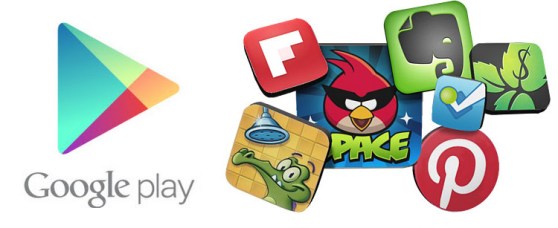When you think of the Google Play store, it’s easy to conjure images of piracy, poorly performing apps, and clumsy microtransactions. Google is keenly aware of these faults and — with its new dedication to cross-platform Google Play support — wants to help developers get the most out of their products and allow players to share their successes with friends.
“Leveling up” your Android game seems ludicrously simple: Focus on quality, support various screen resolutions, and strive to give your users a hassle-free experience. This year’s developer talk focused on urging gamemakers to put more thought into their products and take advantage of the various services Google is rolling out in the coming months.
In an attempt to bolster app quality and developer support, Google now has an in-depth list dedicated to what it takes for a game to reach the vital “featured” status in the Play store. Unsurprisingly, having your game advertised across a multitude of Android devices requires you to thoroughly test your product on various versions of the Android OS, adequately implement common features across all devices, and simply make your creation usable. A large part of Google’s developer talk harped on the fact that the company does vet applications submitted to its service and that software found buggy, exploitative, or generally lacking in polish will not succeed.
Designers looking to polish their apps can use the company’s revised requirements. Developers can even provide a features checklist (found on the design website) to testers so they can focus on what does and doesn’t work with a title before they publish it. If an app launches on the store having overcome common problems with resolution and simple Android interface options, it has a higher chance of reaching “featured” status.
And getting featured can make or break apps on Google Play. In some instances, the week-long feature period can account for nearly 55 percent of a game’s total revenue. Ideally, products are strong enough to remain profitable after this advertising period, but it still behooves developers to play along with Google’s testing procedures and expedite the process. Paying attention to how in-app purchases work and incorporating social functionality can push a good title into the realm of greatness through player connectivity.
Additionally, localization is an increasingly vital force for making software more profitable. Developers like Gameloft, who localize and style its products for foreign markets, see much more installs than companies that simply release the same English app worldwide. Google is now actively trying to help gamemakers retool their products to succeed in non-English-speaking countries.
Beyond paying more attention to how games perform and global marketing, Google is also urging developers to take advantage of new social features coming to the Play store. Soon, whenever players create accounts, they will have direct access to Google Plus, the slowly growing social network. From here, they can create challenges for their friends and recommend content. They can even share certain moments in games online with others.
Google wants to fight the reputation that its game service is a scary, unregulated place. Through simple revenue incentives and opening up how it selects items for its weekly featured app services, Google wants to inspire developers to reach out to customers and improve the service’s image from within. Motivating developers to triple-check apps and giving dedicated Google users an easier way to share content with each other will do a great deal to present Google Play Services as a less foreboding and confusing store.
VentureBeat's mission is to be a digital town square for technical decision-makers to gain knowledge about transformative enterprise technology and transact. Learn More

